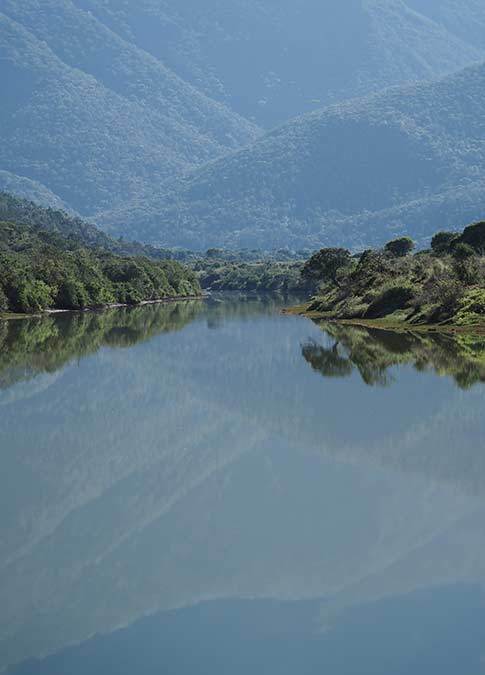Drought
The south-east Cape coast is an area regularly beset by drought. The family farm diary bears witness to this, and it seems that hardly a year passed that was not “the worst in living memory.” Nonetheless for close on 200 years farming activities have continued, despite at times a severe shortage of grazing.
Yet in the days before the land was farmed as it is now, all the early travelers noted the abundance of wild life. In 1797 the British official, John Barrow, recorded how his guide, “Rensburg,” told him that he had once seen between 400 and 500 elephants between the Kariega and the Bushmans Rivers. Skeletal remains of hippo have been found in the Kasouga River valley and in the estuary of the Kariega. There were also buffaloes. Morse Jones, writing of the 1820s, stated: “A drought had set in and an issue of limited rations [to the British settlers] had to be regarded as necessary for another year to come. Buffaloes were plentiful, particularly in the river mouths, and provided some meat.” By the first decade of the 20th century elephants and hippos were gone and soon after that the last buffalo was shot. In addition there were formerly kudu, eland, hartebeest, springbok and any number of smaller animals. How did they cope with droughts? The answer, of course, is that they were free to move. There were no fences and they were able to migrate to those areas where water and grazing were still available.
And now, a century after the last elephants and buffaloes roamed the Port Alfred-Alexandria coast they are once again to be found in the area. They are today regarded not as a possible source of extra rations, to be shot as required, but as treasured elements of our natural heritage, and a part of the web of life on which ultimately we humans depend. Even higher and stronger fences protect them, but also restrict their movement in times of drought. In the 21st century their old enemy, man, has become their protector; very often a heavy responsibility, and especially so when food and water are in short supply.
Springing up in the bone-dry veld between the camp-site and the river, one is at times surprised to see in the middle of summer the cream-coloured nodding heads of the grass-lily - Cyrtanthus clavatus. Each delicate flower has a yellowish to brick-red “landing-strip” for the benefit of the pollinators; guiding them to where, from the plant’s point of view there is work to be done and, so far as the pollinator is concerned, where it will be suitably rewarded. Drought or not, the grass-lilies pop up as regularly as clockwork every year, apparently oblivious of the weather or any change of climate, yet this is not so. Plants can adapt or even, as a species, “move” during climatic changes spread over eons, but not at the rate at which mankind alters the environment.
The grass-lily blooms for a day or two, then is not seen again until the following year. But the grass-lily and its pollinators are as important as the elephant and the buffalo if we are to hand on to our children a healthy environment. Our custodial responsibilities are even greater than we might have imagined if we are to avoid the ultimate “worst year in living memory.”









